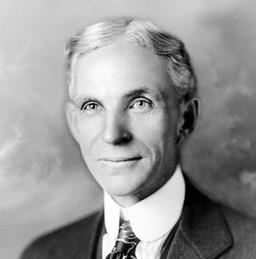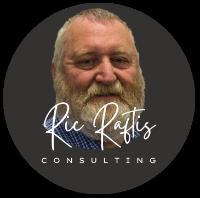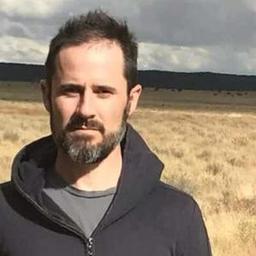215 Quotes
"It’s very hard for single-product solutions to maintain long-term retention without network effects. So if network effects don’t make sense for the type of product value you’re delivering, launching new products to better monetize your existing customers and open up new customer segments can ease the burden on customer acquisition, raise monetization rates, and increase retention all at the same time."
— Casey Winters
How to Build a Successful Consumer Subscription Business"Calm was able to scale its Sleep Stories product in a way that raised the retention rate of its meditation customer base as well as open up segments that were less interested in meditation. It turns out that selling a product solution for something people have to do everyday (sleep) has a much bigger market than a habit a small percent of the world does (meditation)."
— Casey Winters
How to Build a Successful Consumer Subscription Business"Spotify’s playlist sharing was a key growth driver in its early days as lists were shared among friends and publicly on the internet. Spotify and Hulu have also bundled their subscription models to find new audiences and improve retention for both products."
— Casey Winters
How to Build a Successful Consumer Subscription Business"creating a B2B offering allows you to target a new customer business with a new acquisition loop in sales that can acquire hundreds to thousands of people at the same time inside companies. Headspace and Calm have done a good job of expanding into this model from their consumer roots."
— Casey Winters
How to Build a Successful Consumer Subscription Business"when it works, the venture outcomes can be tremendous. Duolingo is worth $6 billion at the time of this writing, Spotify $33 billion, and Netflix $190 billion. Those numbers rival even the best B2B subscription companies—so keep building."
— Casey Winters
How to Build a Successful Consumer Subscription Business"Product people should only be focused on growth i.e. connecting people to the value of a product once they’ve confirmed the product is delivering value."
— Casey Winters
Casey’s Guide to Finding Product/Market Fit"I define product/market fit as satisfaction that allows for sustained growth."
— Casey Winters
Casey’s Guide to Finding Product/Market Fit"One thing I love about customers is that they are divinely discontent. Their expectations are never static – they go up. It’s human nature. We didn’t ascend from our hunter-gatherer days by being satisfied. People have a voracious appetite for a better way, and yesterday’s ‘wow’ quickly becomes today’s ‘ordinary’."
— Casey Winters
Casey’s Guide to Finding Product/Market Fit"Product/market fit is not when customers stop complaining and are fully satisfied. They’ll never stop complaining. They’ll never be fully satisfied."
— Casey Winters
Casey’s Guide to Finding Product/Market Fit"Product/market fit is when they stop leaving"
— Casey Winters
Casey’s Guide to Finding Product/Market Fit"for most businesses, instead of measuring satisfaction, measuring retention is the best signal of product/market fit."
— Casey Winters
Casey’s Guide to Finding Product/Market Fit"Once you have a key action and a designated frequency, the cohort graph should have the key action as the y axis and the designated frequency as the x axis."
— Casey Winters
Casey’s Guide to Finding Product/Market Fit"product/market fit cannot be measured by retention alone. That retention has to create sustainable growth, which means the rate of retention matters."
— Casey Winters
Casey’s Guide to Finding Product/Market Fit"A flattened retention curve of your key action at the designated frequency plus month over month growth in new customers is the best way I have found to measure true product/market fit."
— Casey Winters
Casey’s Guide to Finding Product/Market Fit"There are two main schools of thought for how long you should stay in the first phase, which I will oversimplify into calling the Eric Ries model and the Keith Rabois model (unfair to both of them)"
— Casey Winters
Casey’s Guide to Finding Product/Market Fit"The Ries model emphasizes talking to customers early and often to understand what to build, and whether what you have built is actually solving problems for them."
— Casey Winters
Casey’s Guide to Finding Product/Market Fit"The Rabois model is so driven by the vision of the founders of the company that customer feedback is less important than building what the founders have envisioned before any customers interact with it."
— Casey Winters
Casey’s Guide to Finding Product/Market Fit"The Ries model tends to target a customer segment and attempt to find out their pain points to build something valuable. The Rabois model starts with a strong vision of both a problem and a target solution and works to build that from the start."
— Casey Winters
Casey’s Guide to Finding Product/Market Fit"The only goal of launching a product in the Eric Ries model is to generate feedback from the target customer."
— Casey Winters
Casey’s Guide to Finding Product/Market Fit"The goal of a launch in the Rabois model is to achieve the initial vision that sparked the creation of the product."
— Casey Winters
Casey’s Guide to Finding Product/Market Fit"A successful vision can turn on a light to that room so everyone can see the door and run toward it. Even many of those major pivots were guided by a strong, albeit new, vision from their founders."
— Casey Winters
Casey’s Guide to Finding Product/Market Fit"The Rabois model implies product changes will be more difficult. The product vision is usually taxing, so relying on product change to grow is very expensive."
— Casey Winters
Casey’s Guide to Finding Product/Market Fit"The Eric Ries model is very common in enterprise businesses because founders are confident certain segments have day-to-day problems that aren’t solved and money to pay to create a reliable business model"
— Casey Winters
Casey’s Guide to Finding Product/Market Fit"The Rabois model is more common for hardware because iteration has such long timelines, and consumer models where typically founders have new habits or interactions they need to convince a broad market to try"
— Casey Winters
Casey’s Guide to Finding Product/Market Fit"My personal belief is a strong vision combined with market feedback is a pretty dominant combination of these two approaches whereas many of the other axes depend on the product you are building."
— Casey Winters
Casey’s Guide to Finding Product/Market Fit"If the retention curves every month flatten and new user numbers increase at a healthy payback period, you can feel confident you have product/market fit."
— Casey Winters
Casey’s Guide to Finding Product/Market Fit"With transparent optimism, I create risks of more interpretations of what is happening, external leaks, and it just requires me to communicate a lot more. But ultimately, I think it creates a default trust and default respect with the team, and helps them contribute more to the success of the company."
— Casey Winters
Transparent Optimism"Company cultures have to decide where they exist on a spectrum of open vs. closed in their communication."
— Casey Winters
Transparent Optimism"our approach to de-risking projects should be very different depending on the type of customer we’re building for."
— Casey Winters
Reducing Product Risk and Removing the MVP Mindset"initial releases will never have everything teams want. But if you continue to iterate, this is not a problem. As long as we’re getting value to users as they become available."
— Casey Winters
Reducing Product Risk and Removing the MVP Mindset"Users of products are generally unreliable narrators of their own behaviors and preferences."
— Casey Winters
Reducing Product Risk and Removing the MVP Mindset"we can and should regularly talk to them about their problems, but we have to infer solutions ourselves. We can’t expect our consumers to be excellent product thinkers."
— Casey Winters
Reducing Product Risk and Removing the MVP Mindset"The key thesis of Cody’s design quality framework is that the level of investment before something reaches a customer is tied to how confident we are that we understand both the problem and viability of the solution."
— Casey Winters
Reducing Product Risk and Removing the MVP Mindset"More likely, we are building features. These can be even more lightweight because you are building something on top of an existing product (you can think of a product as a bundle of features)."
— Casey Winters
Reducing Product Risk and Removing the MVP Mindset"MVP’s and MVF’s are to prove that our ideas actually solve a problem. If we prove that, we typically need to invest a lot more to reach the potential of the product or feature idea."
— Casey Winters
Reducing Product Risk and Removing the MVP Mindset"releasing regularly allows you to de-risk your vision technically as well. You get to see how what you’ve built scales or breaks incrementally instead of all at once."
— Casey Winters
Reducing Product Risk and Removing the MVP Mindset"those should be the goals: active users and decrease in churned users. Absolute numbers are what matter in growth."
— Casey Winters
The Right Way To Set Goals for Growth"Teams should take credit for what they do, not for what happens naturally."
— Casey Winters
The Right Way To Set Goals for Growth"if you grow traffic to a lower converting country (Germany) away from a higher converting country (U.S.), you will hit traffic goals, but not signup goals."
— Casey Winters
The Right Way To Set Goals for Growth"An activation rate is two numbers: activated users / total users. There are two ways to move that metric in either direction: change activated users or change total users"
— Casey Winters
The Right Way To Set Goals for Growth"Not all product work is created equal. After initial product-market fit, there are four categories of product problems that need to be managed and sequenced:"
— Casey Winters
Crossing the Canyon: Product Manager to Product Leader — Reforge"To be successful as a Product Leader, you need to have knowledge of all the different types of product problems and lead your team to work on the right ones at the right time without getting into the weeds of the work itself."
— Casey Winters
Crossing the Canyon: Product Manager to Product Leader — Reforge"you have to make decisions on what to do and when."
— Casey Winters
Crossing the Canyon: Product Manager to Product Leader — Reforge"At the SPM level you are thinking about how to maximize the return of an individual type of work. As a PL you need to know how to maximize the overall Return on Investment between all the different types of product work."
— Casey Winters
Crossing the Canyon: Product Manager to Product Leader — Reforge"you have to go from being good at your job to training others to be good at theirs. Your value is evaluated not on your personal output but on the total output of your team."
— Casey Winters
Crossing the Canyon: Product Manager to Product Leader — Reforge"You have to move beyond solving with the resources you have and begin to influence others in the org to solve problems outside your direct span of control. You need to start identifying the full set of things blocking your problem area, and influencing others in the org to do that work."
— Casey Winters
Crossing the Canyon: Product Manager to Product Leader — Reforge"Influencing is being convincing enough to drive someone to do something. You need to learn how to do this with people who are not knowledgeable and living within your function and problem area on a day-to-day basis."
— Casey Winters
Crossing the Canyon: Product Manager to Product Leader — Reforge"To jump the canyon to GPM, one key is figuring out how to create more scope and opportunities for the organization."
— Casey Winters
Crossing the Canyon: Product Manager to Product Leader — Reforge"If you make too many decisions, you aren't helping your team get better at their job, but if you don't escalate the right problems then that creates a separate set of issues."
— Casey Winters
Crossing the Canyon: Product Manager to Product Leader — Reforge"But Pinterest is a very different beast -- one that CEO Ben Silbermann says is “more of a personal tool than a social one.”"
— Casey Winters
Casey Winters on Pinterest's Retention Wins & Why 90% of SEO Advice is Wrong — Reforge"Although it has social roots, the tool is fundamentally about a person’s relationship to content and ideas that they discover either on Pinterest or elsewhere."
— Casey Winters
Casey Winters on Pinterest's Retention Wins & Why 90% of SEO Advice is Wrong — Reforge"Instead of connecting to others, people are on Pinterest to connect with things to do and buy."
— Casey Winters
Casey Winters on Pinterest's Retention Wins & Why 90% of SEO Advice is Wrong — Reforge"What was so exciting to me about joining Pinterest from a business perspective is that it's a rare business where the revenue model doesn't conflict with the product engagement."
— Casey Winters
Casey Winters on Pinterest's Retention Wins & Why 90% of SEO Advice is Wrong — Reforge"Pinterest is a high-intent product, says Winters, and the advertiser tie-in is natural and even additive, not disruptive."
— Casey Winters
Casey Winters on Pinterest's Retention Wins & Why 90% of SEO Advice is Wrong — Reforge"From a metrics perspective, whether for Pinterest or for any other company, growth leaders should look to the business’ core mission for guidance."
— Casey Winters
Casey Winters on Pinterest's Retention Wins & Why 90% of SEO Advice is Wrong — Reforge"“What we had to think about was how do we know if someone found something they're interested in on Pinterest? The key metric that signals that moment is if they save it. As a result, Pinterest has always looked at saves as a key metric.”"
— Casey Winters
Casey Winters on Pinterest's Retention Wins & Why 90% of SEO Advice is Wrong — Reforge"The “Save” metric at Pinterest also provides valuable signal on growth and on the quality of the content on the platform -- is this content something good, and will other users also enjoy it?"
— Casey Winters
Casey Winters on Pinterest's Retention Wins & Why 90% of SEO Advice is Wrong — Reforge"Winters makes a key distinction between mission-oriented companies and business-oriented companies."
— Casey Winters
Casey Winters on Pinterest's Retention Wins & Why 90% of SEO Advice is Wrong — Reforge"“If you're mission-oriented like Pinterest, you try and find the metrics that most closely align to giving you signal that you're fulfilling that mission. On the other hand, you’re more of a business-oriented company trying to make money, then you try and find metrics that most closely align to you making long term revenue.”"
— Casey Winters
Casey Winters on Pinterest's Retention Wins & Why 90% of SEO Advice is Wrong — Reforge"Determining the right retention for a business where you want to grow repeat usage boils down to measuring that action in the natural time period in which you think they should do it."
— Casey Winters
Casey Winters on Pinterest's Retention Wins & Why 90% of SEO Advice is Wrong — Reforge"“Early in a startup, I target whatever the normal frequency is for that behavior the way people currently solve that problem. Long-term, I would see if it's possible to increase it and change the frequency metric accordingly.”"
— Casey Winters
Casey Winters on Pinterest's Retention Wins & Why 90% of SEO Advice is Wrong — Reforge"But many teams get stuck in a rut that they can’t test out of. The problem, says Winters, lies in the experiment’s design."
— Casey Winters
Casey Winters on Pinterest's Retention Wins & Why 90% of SEO Advice is Wrong — Reforge"“One mistake I see some teams make at this stage is that they only do experiments isolating one variable at a time. Sometimes, you still need to do more divergent experiments that test a totally new experience otherwise you can end up stuck in a local maxima."
— Casey Winters
Casey Winters on Pinterest's Retention Wins & Why 90% of SEO Advice is Wrong — Reforge"The biggest wins in growth are often the results of a lot of little experiments, some of which may yield positive results in direct contradiction to industry “best practices.”"
— Casey Winters
Casey Winters on Pinterest's Retention Wins & Why 90% of SEO Advice is Wrong — Reforge"In one example, the team built their own SEO experiment framework to help them figure out which site changes were resulting in search traffic bumps."
— Casey Winters
Casey Winters on Pinterest's Retention Wins & Why 90% of SEO Advice is Wrong — Reforge"We did a quick experiment where we stopped the user from scrolling after a while (the default action of a Pinterest grid is people scrolling). Instead, we pulled up a little banner that said, ‘Sign up to see more of this content.’ That experiment alone improved our conversion rate fifty percent, and with it every graph in the company kinked upward. It was pretty small to do, didn't take very long time, then all of a sudden you're on a totally different trajectory.”"
— Casey Winters
Casey Winters on Pinterest's Retention Wins & Why 90% of SEO Advice is Wrong — Reforge"But, says Winters, the learning from why an experiment fails is infinitely useful in helping you to find the bigger winners later on."
— Casey Winters
Casey Winters on Pinterest's Retention Wins & Why 90% of SEO Advice is Wrong — Reforge"“Not only did those emails not improve our activation rates, but the email about the app in particular had more unsubscribes than app downloads. It was working against us pretty aggressively. That experiment helped us figure out that sending emails with relevant content -- matching why people joined Pinterest in the first place -- is what mattered to increasing activation, not teaching users more about how the service worked.”"
— Casey Winters
Casey Winters on Pinterest's Retention Wins & Why 90% of SEO Advice is Wrong — Reforge"He feared that not capturing a user’s email -- and opting for phone only -- would lower their activation rate because they would lose out on a valuable channel to bring users back to the site, without substituting an alternate communication channel (like SMS) to make up for it."
— Casey Winters
Casey Winters on Pinterest's Retention Wins & Why 90% of SEO Advice is Wrong — Reforge"The challenge from a growth perspective, however, is that the responsibility to take care of retention can be shared between multiple teams."
— Casey Winters
Casey Winters on Pinterest's Retention Wins & Why 90% of SEO Advice is Wrong — Reforge"Growth teams may not have as much freedom to experiment outside of emails and notifications, which are a limited toolset for improving your retention, says Winters."
— Casey Winters
Casey Winters on Pinterest's Retention Wins & Why 90% of SEO Advice is Wrong — Reforge"We asked ourselves if it was a product problem or something we could influence through product changes. It turned out the main reason that people were ordering via those restaurants without Grubhub was because they had been ordering from those restaurants prior to using GrubHub, so they maintained their old habits."
— Casey Winters
Casey Winters on Pinterest's Retention Wins & Why 90% of SEO Advice is Wrong — Reforge"We thought if we could provide a small incentive to move those orders onto GrubHub, we could really change our frequency. So we created a game that you played after every third order, and with that game you had a one in four chance of winning free food. We launched it hoping it would break even as like a three month test, but the cohorts immediately started to bend upward and order frequency shot up and sustained. People just loved playing the game."
— Casey Winters
Casey Winters on Pinterest's Retention Wins & Why 90% of SEO Advice is Wrong — Reforge"When the service launched outside of the U.S., the “Pin It” button was deliberately not localized because the company viewed “Pin It” as part of their brand."
— Casey Winters
Casey Winters on Pinterest's Retention Wins & Why 90% of SEO Advice is Wrong — Reforge"Activation rates shot up instantly. It even helped activation rates in the U.S. to change that button from Pin It to Save. We ended up using that as a signal to do a lot more experiments to make the product simpler and easier to understand for new users.”"
— Casey Winters
Casey Winters on Pinterest's Retention Wins & Why 90% of SEO Advice is Wrong — Reforge"“It's basically running experiments on the Google algorithm and seeing what they care about for your business.”"
— Casey Winters
Casey Winters on Pinterest's Retention Wins & Why 90% of SEO Advice is Wrong — Reforge"The Pinterest team ran SEO experiments with surprising results that taught them to question every SEO best practice."
— Casey Winters
Casey Winters on Pinterest's Retention Wins & Why 90% of SEO Advice is Wrong — Reforge"Since Pinterest is a catalog of ideas in the form of images, they knew they needed text around their images to tell Google what concepts the images were relevant for."
— Casey Winters
Casey Winters on Pinterest's Retention Wins & Why 90% of SEO Advice is Wrong — Reforge"Companies should ask, what are the strengths and weaknesses in my business, what is the algorithm awarding and not rewarding, and then a creative exercise to try and build product that will work for users as well as search engines that helps you get the most you can out of a channel.”"
— Casey Winters
Casey Winters on Pinterest's Retention Wins & Why 90% of SEO Advice is Wrong — Reforge"I now focus much more on understanding the current business I'm working on, where it's working, where it's not, and seeing if these tactics that I've learned can help, but if not, just invent new ones.”"
— Casey Winters
Casey Winters on Pinterest's Retention Wins & Why 90% of SEO Advice is Wrong — Reforge"I no longer think that growth is a menu you pick from. I now think of it as a function.”"
— Casey Winters
Casey Winters on Pinterest's Retention Wins & Why 90% of SEO Advice is Wrong — Reforge"The role of that function, says Winters, is to connect the most amount of people to the current value of a product."
— Casey Winters
Casey Winters on Pinterest's Retention Wins & Why 90% of SEO Advice is Wrong — Reforge"He says rather than merely bringing more people to the product, companies should focus more on fixing the friction deep inside the product that’s preventing people from connecting to its core value. That effort may not have anything to do with SEO, email or any one popular tactic or channel."
— Casey Winters
Casey Winters on Pinterest's Retention Wins & Why 90% of SEO Advice is Wrong — Reforge"the next step beyond that is thinking about, “What are the current bottlenecks that are preventing us from being a more successful business and how do I apply an experimentation framework to diminish those bottlenecks?’ That’s where you know your growth team has matured.”"
— Casey Winters
Casey Winters on Pinterest's Retention Wins & Why 90% of SEO Advice is Wrong — Reforge"Generally, the biggest mistake founders can make when starting to hire a team is defer too many decisions too quickly to new employees"
— Casey Winters
Founder Intuition vs. Team Expertise vs. Customer Expertise"Founders frequently convince themselves that this new person they hired is an expert on this topic, and they should defer to them. The opposite actually tends to be true. The founders are experts on the business."
— Casey Winters
Founder Intuition vs. Team Expertise vs. Customer Expertise"The opposite mistake tends to happen later on as the business grows. The founders have now staffed the company with a lot of great talent who have had time to learn the business, have impact, build processes, know customers really well, etc."
— Casey Winters
Founder Intuition vs. Team Expertise vs. Customer Expertise"Founder intuition becomes less reliable because the founder(s)’ advantage of having spent more time on the problem goes away."
— Casey Winters
Founder Intuition vs. Team Expertise vs. Customer Expertise"This degradation of founder intuition also happens at different times for different parts of the business."
— Casey Winters
Founder Intuition vs. Team Expertise vs. Customer Expertise"Great founders start to back away from relying on founder intuition when they see the expertise developing on the team, or are proven wrong in a meaningful way by the team that makes them start to question their often blind faith in their own judgment."
— Casey Winters
Founder Intuition vs. Team Expertise vs. Customer Expertise"Having worked with lots of founders myself as a leader, advisor, investor, or board member, I default to founders needing to operate differently at different stages."
— Casey Winters
Founder Intuition vs. Team Expertise vs. Customer Expertise"If you are a startup employee or leader, you have to respect founder intuition greatly. The company would not have gotten to the point you could have even been hired had that intuition not served the company well."
— Casey Winters
Founder Intuition vs. Team Expertise vs. Customer Expertise"But when you’ve really spent the time to understand the business and you or your team can start to have better judgment than the founder, it’s important to signal that confidence and get alignment on the operating model shifting."
— Casey Winters
Founder Intuition vs. Team Expertise vs. Customer Expertise"But most founders want to do what is best for the company, and giving them the signal on where it’s valuable for them to lean in vs. that potentially being unhelpful is worth figuring out."
— Casey Winters
Founder Intuition vs. Team Expertise vs. Customer Expertise"On the flip side, if the founder is putting decisions on you or your team where the founder would be better fit to make the calls themselves, tell them!"
— Casey Winters
Founder Intuition vs. Team Expertise vs. Customer Expertise"What is ironic about founders and employees facing this split between intuition from expertise is both have to do that same analysis with the company’s customers."
— Casey Winters
Founder Intuition vs. Team Expertise vs. Customer Expertise"When startups are small, most founders and employees tend to think the customer knows best."
— Casey Winters
Founder Intuition vs. Team Expertise vs. Customer Expertise"But as a company scales, it starts to see every way customers use a product, and what works best."
— Casey Winters
Founder Intuition vs. Team Expertise vs. Customer Expertise"Then, the company’s job switches from observing what customers are doing and adopting them to teaching customers what best practices the company is aware of that will make them more successful."
— Casey Winters
Founder Intuition vs. Team Expertise vs. Customer Expertise"But founder intuition does ebb over time in most areas as founders scale up the company, and of course, teams get a lot smarter as they spend time on deep company problems."
— Casey Winters
Founder Intuition vs. Team Expertise vs. Customer Expertise"Having a dialog about where teams are in this journey is important to helping startups scale, clearing a path for teams to have maximum impact, and for leveraging founders’ scarce time in the areas that are most highly leveraged."
— Casey Winters
Founder Intuition vs. Team Expertise vs. Customer Expertise"product/market fit is really about finding a level of satisfaction (usually measured through retention) that will drive scalable acquisition."
— Casey Winters
Finding Product/Market Fit with Network Effects"Many founders struggle to apply this same framework for network effect businesses though, and it’s easy to see why."
— Casey Winters
Finding Product/Market Fit with Network Effects"When a network is a key component of the value prop you are trying to create, and things aren’t going well, it’s hard to understand which is the real issue preventing the product from reaching product/market fit:"
— Casey Winters
Finding Product/Market Fit with Network Effects"Cross-side network effects can be painfully difficult to find product/market fit for because you are building out a product for two different types of customers that have to align."
— Casey Winters
Finding Product/Market Fit with Network Effects"The first is that for businesses like marketplaces, it tends to be easy to understand how to constrain the audience initially. The first thing to understand is that there a spectrum of network effects from global to local:"
— Casey Winters
Finding Product/Market Fit with Network Effects"Global Network Effect: every seller makes the product better for every buyer and vice versa"
— Casey Winters
Finding Product/Market Fit with Network Effects"Local Network Effect: every seller within certain area makes the product better for every buyer within certain area and vice versa"
— Casey Winters
Finding Product/Market Fit with Network Effects"Assuming you pick the correct geographic or categorical limit, you can test the value prop and scaling of supply and demand to find liquidity, which is a synonymous term with product/market fit for marketplaces."
— Casey Winters
Finding Product/Market Fit with Network Effects"There is almost always a quality and quantity element to liquidity. If you understand it, you can then measure product/market fit by just analyzing retention and acquisition for both sides of the market."
— Casey Winters
Finding Product/Market Fit with Network Effects"Platforms are more complicated in the beginning, but eventually follow the same logic as marketplaces"
— Casey Winters
Finding Product/Market Fit with Network Effects"On the software side, Shopify and WordPress have spent decades building their own SaaS features to allow the platform to become stronger and stronger with other features built by external developers they would never consider in their roadmap."
— Casey Winters
Finding Product/Market Fit with Network Effects"For products that expect to create a better experience through data, the journey to product/market fit is usually about collecting enough data to provide a compelling experience. For some products, this takes a massive amount of time."
— Casey Winters
Finding Product/Market Fit with Network Effects"After I joined Pinterest, we had to make a hard pivot to onboard new users based on topics instead of their friend graph as we realized there was stronger product/market fit as a content recommendation engine vs. a social network."
— Casey Winters
Finding Product/Market Fit with Network Effects"This creates an issue for geographical expansion."
— Casey Winters
Finding Product/Market Fit with Network Effects"To rectify this, we had to reconfigure our feeds to emphasize the local content we had, in the local language, and in the local way of measuring (no more imperial measurements!)."
— Casey Winters
Finding Product/Market Fit with Network Effects"For many network driven businesses, especially in the social realm, there is a Goldilocks zone of user experience."
— Casey Winters
Finding Product/Market Fit with Network Effects"For a marketplace, there is usually a clear way to constrain the audience to generate appropriate retention metrics to evaluate product / market fit. Geography or category is the dominant mode for this in marketplaces."
— Casey Winters
Finding Product/Market Fit with Network Effects"For SaaS, it’s a specific target audience. But social or content driven networks eventually want to scale to everyone, and a lot of times founders or leaders can’t tell which should be the first audience that will hook onto it. The better your thesis, the easier it is to evaluate"
— Casey Winters
Finding Product/Market Fit with Network Effects"So the dominant strategy for building direct networks effect business is to have a strong thesis for the target market, prepare to be surprised both who the target market and right features are, and shift to another type of network effect over time."
— Casey Winters
Finding Product/Market Fit with Network Effects"Outside of communication tools, it’s usually my belief that direct network effect products are actually cross-side network effects products where it’s just too early to understand who the different sides are."
— Casey Winters
Finding Product/Market Fit with Network Effects"So, founders have to understand the user data or have a strong vision for what type of cross-side network effect or data network effect can be created to scale product/market fit over time."
— Casey Winters
Finding Product/Market Fit with Network Effects"While both concepts have value, attempts at finding product/market fit with network effects businesses tend to reward more of the Rabois model, or else the testing you do will be inconclusive on the reasons why something isn’t working between the core value prop vs. the size of the network."
— Casey Winters
Finding Product/Market Fit with Network Effects"The analytics persona is created by looking at clusters of users based on their usage and defining them based on that usage."
— Casey Winters
The Three Personas: How Marketing, Product, and Analytics Attempt to Define The Customer"The product persona, just like the analytics persona, focuses on understanding existing users."
— Casey Winters
The Three Personas: How Marketing, Product, and Analytics Attempt to Define The Customer"In contrast to the the analytics persona, it relies on qualitative research to define who these people are, not just what actions they take."
— Casey Winters
The Three Personas: How Marketing, Product, and Analytics Attempt to Define The Customer"When we mapped these personas back to our data, we were able to find that one segment was detrimental to serve because of high customer service costs, and that one segment was high potential, but low value currently because we had not built the right product for them yet."
— Casey Winters
The Three Personas: How Marketing, Product, and Analytics Attempt to Define The Customer"The marketing persona, unlike the first two personas, is usually a forward-looking persona: about who the company is going to try to reach. These are customers you want rather than customers you have."
— Casey Winters
The Three Personas: How Marketing, Product, and Analytics Attempt to Define The Customer"The marketing persona exists to define a target market to go after."
— Casey Winters
The Three Personas: How Marketing, Product, and Analytics Attempt to Define The Customer"Since this persona is about targeting people outside the product, one common tool created during this process is a mapping of the target customer’s typical day."
— Casey Winters
The Three Personas: How Marketing, Product, and Analytics Attempt to Define The Customer"All of these personas have pros and cons, and I recommend using them in tandem rather than a one size fits all approach."
— Casey Winters
The Three Personas: How Marketing, Product, and Analytics Attempt to Define The Customer"Since they are based on secondary data, marketers can sometimes invent personas that don’t exist or are too small to be important."
— Casey Winters
The Three Personas: How Marketing, Product, and Analytics Attempt to Define The Customer"Marketing personas also can be unhelpful to some organic growth strategies or for products that have infinitely large markets since they are based on niches and targeting."
— Casey Winters
The Three Personas: How Marketing, Product, and Analytics Attempt to Define The Customer"Personas of all types are also mistakenly used in lieu of personalization for many internet products. Email is a common example."
— Casey Winters
The Three Personas: How Marketing, Product, and Analytics Attempt to Define The Customer"SAAS: software that businesses access online and purchase via a subscription e.g. Slack, Adobe, Atlassian"
— Casey Winters
Sequencing Business Models: Can That SAAS Business Turn Into a Marketplace?"Marketplace: a business where sellers (frequently businesses) provide their services on a platform to attract additional buyers, and buyers come to this marketplace to seek out these services and find new suppliers."
— Casey Winters
Sequencing Business Models: Can That SAAS Business Turn Into a Marketplace?"Marketplaces commonly process the transaction and charge a commission to either the supplier or the demander. If not, they usually charge some sort of lead generation fee to the supplier."
— Casey Winters
Sequencing Business Models: Can That SAAS Business Turn Into a Marketplace?"So, when we talk about businesses trying to become marketplaces, what we’re talking about usually is sellers of software to businesses trying to help those same businesses attract more buyers by aggregating buyers on their platform and aiding in the discovery of those buyers finding the businesses the company currently counts as customers."
— Casey Winters
Sequencing Business Models: Can That SAAS Business Turn Into a Marketplace?"Marketplaces trend towards vertical integration over time e.g. Zillow"
— Casey Winters
Sequencing Business Models: Can That SAAS Business Turn Into a Marketplace?"Perhaps as SAAS has moved into more niche verticals, the extension platform opportunities have dried up, so companies are looking at consumer marketplaces as a new potential growth lever. But SAAS companies continue to grow on the public markets."
— Casey Winters
Sequencing Business Models: Can That SAAS Business Turn Into a Marketplace?"Perhaps as SAAS has expanded into industries where customer acquisition is difficult, they’ve found their businesses at best only solve the second most important problem for their customers."
— Casey Winters
Sequencing Business Models: Can That SAAS Business Turn Into a Marketplace?"2 Desire for Market Networks"
— Casey Winters
Sequencing Business Models: Can That SAAS Business Turn Into a Marketplace?"These companies combine SAAS, marketplaces, and networks."
— Casey Winters
Sequencing Business Models: Can That SAAS Business Turn Into a Marketplace?"1 Founders have to change the incentive structure for all or a significant percentage of the company"
— Casey Winters
Sequencing Business Models: Can That SAAS Business Turn Into a Marketplace?"It’s always more attractive to take the more guaranteed optimization on the core business than risk those resources for the very long term, completely risky proposition that might drive a step change in growth for the business much later."
— Casey Winters
Sequencing Business Models: Can That SAAS Business Turn Into a Marketplace?"Fortunately, this issue is not new to fast growing companies, and there is a solution."
— Casey Winters
Sequencing Business Models: Can That SAAS Business Turn Into a Marketplace?"Our largest strategic issue was international growth, but employees kept optimizing 1-2% changes in the U.S. business that moved the top line instead of international work that needed to begin from scratch."
— Casey Winters
Sequencing Business Models: Can That SAAS Business Turn Into a Marketplace?"Founders usually have two tools to solve this problem. The first is to make the entire company’s growth revolve around this new initiative. That’s what Ben Silbermann did at Pinterest."
— Casey Winters
Sequencing Business Models: Can That SAAS Business Turn Into a Marketplace?"The other tool is what usually happens at larger companies looking to expand into new product lines. They create a new team with separate goals and reporting lines."
— Casey Winters
Sequencing Business Models: Can That SAAS Business Turn Into a Marketplace?"2 Founders have to shepherd the right new and existing resources most likely to value the business model transition and change the company culture"
— Casey Winters
Sequencing Business Models: Can That SAAS Business Turn Into a Marketplace?"Strong businesses usually build a culture of understanding their customers and their model very well and catering to those needs. What happens when you suddenly ask those employees to care about a second customer, or a new business model, and potentially trade off the needs?"
— Casey Winters
Sequencing Business Models: Can That SAAS Business Turn Into a Marketplace?"This cultural issue frequently requires new blood in the organization and careful recruitment of internal resources that are more passionate about the opportunity and usually have some background in consumer product development."
— Casey Winters
Sequencing Business Models: Can That SAAS Business Turn Into a Marketplace?"Usually, leaders are brought in to lead teams like this with heavy consumer backgrounds, and they recruit more new people with consumer backgrounds."
— Casey Winters
Sequencing Business Models: Can That SAAS Business Turn Into a Marketplace?"1 Founders need to confirm there is a demand side to this market, and the way you would engage with them aligns to you and your customers’ business models"
— Casey Winters
Sequencing Business Models: Can That SAAS Business Turn Into a Marketplace?"One major reason marketplace transitions fail is that there isn’t actually a demand side to this theoretical marketplace to be added."
— Casey Winters
Sequencing Business Models: Can That SAAS Business Turn Into a Marketplace?"One is that the SAAS customers make their revenue not by selling something people want to buy and find more, but that people feel compelled to support financially."
— Casey Winters
Sequencing Business Models: Can That SAAS Business Turn Into a Marketplace?"The second shade is that the marketplace opportunity is only to find a vendor once on the demand side."
— Casey Winters
Sequencing Business Models: Can That SAAS Business Turn Into a Marketplace?"2 Make sure the opportunity actually aligns to the characteristics of other successful marketplaces"
— Casey Winters
Sequencing Business Models: Can That SAAS Business Turn Into a Marketplace?"One other factor Bill neglects to mention that is important is that normally marketplaces are built on top of under-utilized fixed assets:"
— Casey Winters
Sequencing Business Models: Can That SAAS Business Turn Into a Marketplace?"Can the Transition to Marketplace Ever Work?"
— Casey Winters
Sequencing Business Models: Can That SAAS Business Turn Into a Marketplace?"And in our examples, we do show that most cross side networks (but not all) emerge with the supply side first. But you have to remember that you do have to hit minimum scope for the demand side as well. And many businesses find they do not have a good answer for this."
— Casey Winters
Sequencing Business Models: Can That SAAS Business Turn Into a Marketplace?"With the SAAS to marketplace strategy, you defer the hardest part of your strategy."
— Casey Winters
Sequencing Business Models: Can That SAAS Business Turn Into a Marketplace?"Almost all marketplaces add a SAAS component eventually to their model."
— Casey Winters
Sequencing Business Models: Can That SAAS Business Turn Into a Marketplace?"One of the things we are trying to get better at is defining the type of product problem we are working on, and outlining how we build based on who we are building for, whether it’s consumers or the many different types of event creators we support."
— Casey Winters
Reducing Product Risk and Removing the MVP Mindset"RULE 1 OF PRODUCT WORK: IT IS NEVER DONE"
— Casey Winters
Reducing Product Risk and Removing the MVP Mindset"A FRAMEWORK FOR REDUCING RISK IN WHAT WE BUILD"
— Casey Winters
Reducing Product Risk and Removing the MVP Mindset"So what this implies is that our approach to de-risking projects should be very different depending on the type of customer we’re building for."
— Casey Winters
Reducing Product Risk and Removing the MVP Mindset"This ends up creating two spectrums to help you understand what to do by level of sophistication of the user vs. how much data users generate. Each of these quadrants tends to have a different approach to de-risking projects."
— Casey Winters
Reducing Product Risk and Removing the MVP Mindset"A FRAMEWORK FOR DIFFERENT PRODUCT APPROACHES WITH DIFFERENT LEVELS OF AMBIGUITY"
— Casey Winters
Reducing Product Risk and Removing the MVP Mindset"Your development approach should change based on how ambiguous the problem and ideal solution are."
— Casey Winters
Reducing Product Risk and Removing the MVP Mindset"With enough validation, teams should invest in building minimum viable products or features."
— Casey Winters
Reducing Product Risk and Removing the MVP Mindset"It is about delivering value to users by building the smallest product you can to test your hypothesis."
— Casey Winters
Reducing Product Risk and Removing the MVP Mindset"MVP’s and MVF’s are to prove that our ideas actually solve a problem."
— Casey Winters
Reducing Product Risk and Removing the MVP Mindset"The goal is usually to reduce the ambiguity around the product problem and solution so that you are not building an MVP/MVF, but instead doing phased delivery."
— Casey Winters
Reducing Product Risk and Removing the MVP Mindset"When projects are de-risked, we start building the desired product directly in phases. No shortcuts on design quality."
— Casey Winters
Reducing Product Risk and Removing the MVP Mindset"how do you break up the product vision into phases when you have such a clear vision of the whole you want to build? Shouldn’t you just build it all upfront? There are a few reasons this is a bad idea."
— Casey Winters
Reducing Product Risk and Removing the MVP Mindset"One is that if you wait to deliver some value to customers until all of the value you envisioned is completed, customers are dealing with sub-par experiences that do not improve for a long time."
— Casey Winters
Reducing Product Risk and Removing the MVP Mindset"Secondly, even with strong visions backed by data, usage of products can surprise you. It’s better to get the learning from usage incrementally over time to make micro-adjustments to the vision."
— Casey Winters
Reducing Product Risk and Removing the MVP Mindset"I would say there are three common failure modes depending on how far along the company is."
— Casey Winters
Why Product Leaders Fail"The earlier stage of a company it is, the more likely the answer is going to be misalignment with the founder/CEO."
— Casey Winters
Why Product Leaders Fail"What no one tells product leaders when they accept product leadership roles is that nine times out ten the founder and CEO still wants to drive the product vision."
— Casey Winters
Why Product Leaders Fail"And as founders scale, their founder intuition ebbs in effectiveness in comparison to product expertise in-house, but it takes a long time for founders to accept that."
— Casey Winters
Why Product Leaders Fail"For later stage companies, the more likely answer is that the CPO is really only good at one type of product work, and the type of product work needed for the business changes over time."
— Casey Winters
Why Product Leaders Fail"Founders tend to have insanely good intuition about their customers and products because, let’s face it, no one has spent near as much time thinking about them and their problems."
— Casey Winters
Why Product Leaders Fail"Commonly, what happens during this process is both the founder and prospective product leader end up jamming together on the future product vision."
— Casey Winters
Why Product Leaders Fail"Both sides love this engagement, but for the founder, it’s not an effective test on how much the prospective product leader will help the founder, and for the product leader, it can give a false impression that they will have a ton of say in the product vision."
— Casey Winters
Why Product Leaders Fail"If at all possible, founders should leverage outside expertise to structure the recruiting and interview process for this type of role."
— Casey Winters
Why Product Leaders Fail"Failure Mode 2: Does the Expertise Match the Type of Product Work Needed?"
— Casey Winters
Why Product Leaders Fail"Founders often lack the understanding of what type of product challenge they are actually facing when they attempt to hire a product leader."
— Casey Winters
Why Product Leaders Fail"Network effects businesses tend to focus more on growth because more users make the product stronger in a much more meaningful way than new features."
— Casey Winters
Why Product Leaders Fail"SaaS businesses tend to need to launch lots of new features over time."
— Casey Winters
Why Product Leaders Fail"Failure Mode 3: Can the Product Leader Adapt as Needs Change?"
— Casey Winters
Why Product Leaders Fail"So while the old school product leader is a specialist, the new school product leader needs to be a chameleon, who can balance a portfolio across scaling, new product work, feature work, and growth weighted toward the needs of the business, and re-weight it considerably over time as business needs change rather than leave once business needs change."
— Casey Winters
Why Product Leaders Fail"Both founders and product leaders can eliminate some of what makes it so difficult by aligning on expectations before hiring roles, and on aligning which problems the organization is focused on right now."
— Casey Winters
Why Product Leaders Fail"They are both the best equipped to understand when needs change and help the organization change with them."
— Casey Winters
Why Product Leaders Fail"What is your frequency target? (How often should we expect the user to receive value?)"
— Casey Winters
Why Onboarding is the Most Crucial Part of Your Growth Strategy | by Casey Winters | Greylock Perspectives"What is your key action? (The action signifies the user is receiving enough value to remain engaged)"
— Casey Winters
Why Onboarding is the Most Crucial Part of Your Growth Strategy | by Casey Winters | Greylock Perspectives"If the line flattens rather quickly, your successful activation metric is people who are still doing [key action] at [set interval] at [this period after signup]."
— Casey Winters
Why Onboarding is the Most Crucial Part of Your Growth Strategy | by Casey Winters | Greylock Perspectives"To research onboarding, talk to both groups of people to get their thoughts. I like to do a mix of surveys, phone calls, and qualitative research using the product."
— Casey Winters
Why Onboarding is the Most Crucial Part of Your Growth Strategy | by Casey Winters | Greylock Perspectives"1: Get to product value as fast as possible — but not faster"
— Casey Winters
Why Onboarding is the Most Crucial Part of Your Growth Strategy | by Casey Winters | Greylock Perspectives"they start the user in an empty state where the product doesn’t work until the user does something."
— Casey Winters
Why Onboarding is the Most Crucial Part of Your Growth Strategy | by Casey Winters | Greylock Perspectives"we should get people to the core product as fast as possible — but not faster. What that means is that you should only ask the user for the minimum amount of information you need to get them to the valuable experience."
— Casey Winters
Why Onboarding is the Most Crucial Part of Your Growth Strategy | by Casey Winters | Greylock Perspectives"Principle 2: Remove all friction that distracts the user from experiencing product value"
— Casey Winters
Why Onboarding is the Most Crucial Part of Your Growth Strategy | by Casey Winters | Greylock Perspectives"Retention is driven by a maniacal focus on the core product experience."
— Casey Winters
Why Onboarding is the Most Crucial Part of Your Growth Strategy | by Casey Winters | Greylock Perspectives"New users not only don’t need those yet; including them makes it harder to understand the basics"
— Casey Winters
Why Onboarding is the Most Crucial Part of Your Growth Strategy | by Casey Winters | Greylock Perspectives"a key element of successful onboarding is removing everything but the basics of the product until those basics are understood."
— Casey Winters
Why Onboarding is the Most Crucial Part of Your Growth Strategy | by Casey Winters | Greylock Perspectives"Principle 3: Don’t be afraid to educate contextually"
— Casey Winters
Why Onboarding is the Most Crucial Part of Your Growth Strategy | by Casey Winters | Greylock PerspectivesExplore More Quotes 📚
Want to Save Quotes?
Glasp is a social web highlighter that people can highlight and organize quotes and thoughts from the web, and access other like-minded people’s learning.


















